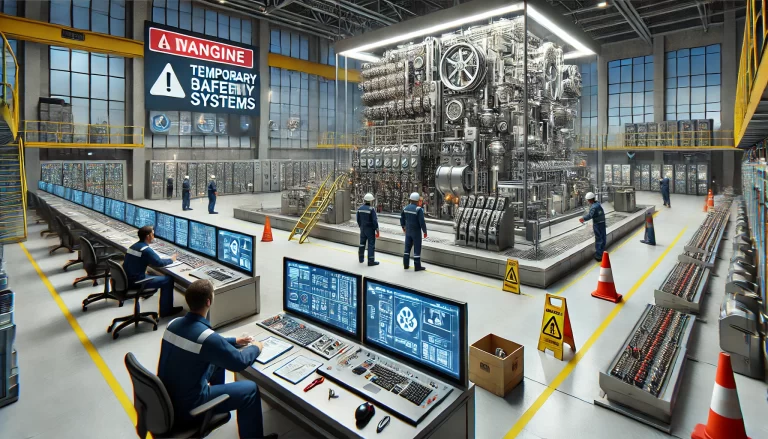1. Introduction
Automation instruments are critical components in petrochemical control systems. They are widely used for detection, control, execution, and display throughout industrial production processes. A properly designed and maintained instrumentation system enables real-time monitoring of production status, supports process optimization, and ensures product quality.
When automation instruments fail, they can significantly disrupt production, compromise product quality, or even pose safety risks. Therefore, operators must understand the physical structure, measurement principles, and performance characteristics of instruments to accurately identify and resolve failures.

2. Classification of Automation Instruments
2.1 Temperature Instruments
Temperature control is essential in petrochemical processes where specific chemical reactions must occur under tightly controlled thermal conditions. Most systems use contact-based measurement via thermocouples or RTDs, often integrated with fieldbus-based automatic control systems.
2.2 Pressure Instruments
Pressure instruments come in various types—such as pressure sensors, transmitters, and specialized gauges—suitable for high-temperature, corrosive, or crystallizing environments. Signals are typically transmitted to DCS systems for centralized pressure regulation.
2.3 Level Instruments
Level measurement can be based on buoyancy, differential pressure, radar, or radiation methods. Radar level sensors are increasingly preferred in petrochemical environments due to their accuracy and robust chemical compatibility.
2.4 Flow Instruments
Flow meters are categorized based on their measurement principle:
Volumetric flow (e.g., differential pressure type, velocity type)
Mass flow (e.g., Coriolis-type flow meters)

3. Common Causes of Instrument Failures
An automation instrument typically comprises a sensor, transmitter, and display unit. Faults may manifest as abnormal readings—such as values being too high, too low, fluctuating, or frozen. These abnormalities can arise from two main sources:
Process anomalies
Malfunction in the measurement loop
Accurate diagnosis requires:
Understanding instrument structure and operating principles
Familiarity with process flow and fluid properties
Knowledge of system wiring and signal transmission paths
4. Troubleshooting by Instrument Type
4.1 Temperature Instrument Failures
| Symptom | Possible Cause | Suggested Action |
|---|---|---|
| Sudden extreme reading (max/min) | Sensor or amplifier fault | Check thermocouple or RTD; test signal amplifier |
| Frequent oscillations | Improper PID tuning | Re-tune PID controller |
| Slow response or lag | Process changes or sensor delay | Inspect thermal contact or lag time |

4.2 Pressure Instrument Failures
| Symptom | Possible Cause | Suggested Action |
|---|---|---|
| Fluctuating reading | Process or PID issue | Check process stability; re-tune PID parameters |
| Constant reading | Blocked impulse line or faulty transmitter | Inspect impulse lines and transmitter output |
| Inconsistent readings across devices | Sensor damage or installation error | Recalibrate or replace sensor if needed |
4.3 Level Instrument Failures
| Symptom | Possible Cause | Suggested Action |
|---|---|---|
| Always max/min value | Faulty level control loop or process issue | Switch to manual mode, observe actual level change |
| Reading mismatch (diff. pressure type) | Liquid seal issue or migration error | Refill seal liquid; recalibrate zero point |
| Oscillation in readings | Process changes or faulty sensor | Isolate process variation from instrument fault |
4.4 Flow Instrument Failures
| Symptom | Possible Cause | Suggested Action |
|---|---|---|
| Max reading, no response to valve | Instrument system fault | Test signal transmission and impulse lines |
| Reading fluctuates in auto and manual | PID or sensor fault | Adjust PID or verify instrument performance |
| Reading too low | Valve closed, pipe clogged, or signal loss | Check valve, process line, and sensor signal path |

5. Recommendations for Effective Fault Handling
Always compare field instrument data with control room readings to rule out display errors.
Cross-check signals between transmitter and controller to locate signal path faults.
Incorporate preventive maintenance routines (e.g., calibration, cleaning, tightening connections).
Keep records of frequent faults to aid root cause analysis and long-term reliability improvements.
6. Conclusion
Automation instruments are both diagnostic tools and control executors in petrochemical production. Failures can stem from both instrument malfunction and process disturbances. A systematic approach—integrating instrumentation knowledge with process understanding—is essential for fast diagnosis, accurate repair, and sustained operational stability.
